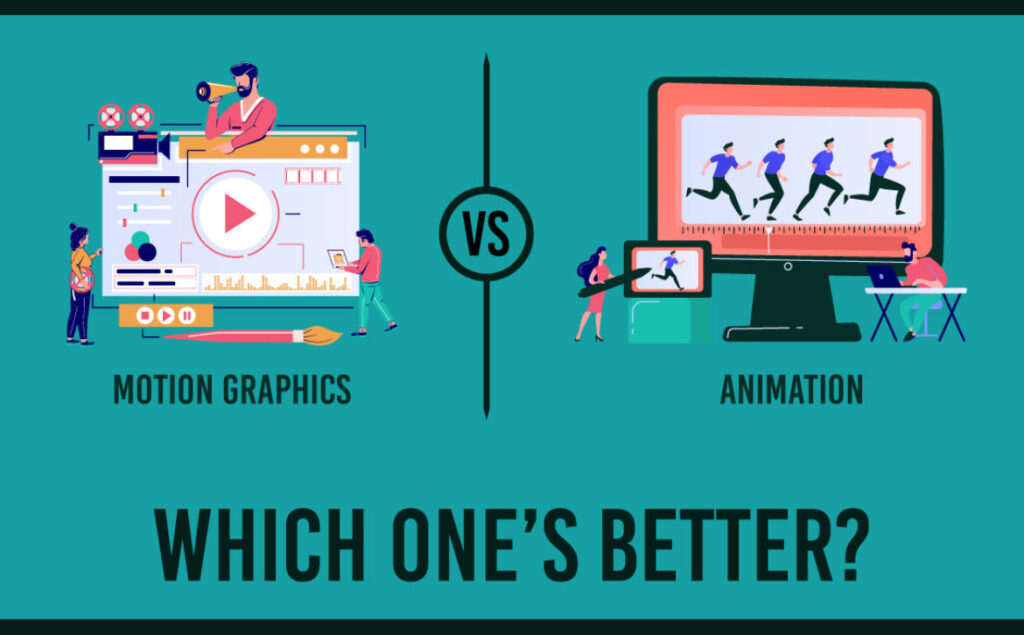
The distinction between animation and motion graphics is undoubtedly something you’ve wondered about if you ever wanted to learn more about the effects of animated video on your business or cooperate with a motion graphics studio.
The difference is not always clear-cut, and the names are frequently used interchangeably.
We’ll describe motion graphics in this post and go through how it distinguishes from other types of animation. We’ll also discuss when to use which terms while discussing animation and motion graphics.
What is motion graphics, and what is animation?

Source: creamyanimation.com
Usually, without adhering to a predetermined storyline, motion graphics add animation and motion to a static graphic design.
If you want to add some more visual effects to your chart, you need motion graphics. If you want a logo to move, you need motion graphics as well.
But in case you need to tell a comprehensive story using moving illustrations, it’s not motion graphics.
In fact, you can tell if you’re working with motion graphics or animation by whether or not a “narrative” is being conveyed.
Motion graphics can visually represent difficult concepts. This technique can be compared to visual assistance. Some concepts, especially broad, abstract ones, are challenging to convey through written or static image representations. Motion graphics, on the contrary, can flawlessly explain everything in only a few seconds.
Besides, many different audiences like the aesthetic appeal of motion graphics. Animations might come out as too silly for a professional setting. However, motion graphics can leverage that adorable and entertaining look and adapt it to more serious subjects. It has the power to make your message more exciting and engaging regardless of the business niche you’re in.
Motion graphics are included under the more general heading of animation. The history of animation spans more than a century.
Animation, to be brief, is any process that transforms still objects into moving ones, including stop motion, motion graphics, and hand-drawn animation. These divisions are not exclusive of one another. The majority of motion graphics are created using CGI.
The content of motion graphics is what sets them apart from other forms of animation, at least when it comes to a marketing video. Animation as a distinguished term from motion graphics means an animated video that has storytelling.
Consider it this way: motion graphics are used in videos to demonstrate ideas by animating static images. Your video is more likely to be considered animation if it includes a certain character who has an emotional journey.
What technique and when to choose?

Source: logopoppin.com
The internet enjoys video content, that much is obvious. Videos lead to higher levels of engagement, drive more traffic, and bring more conversions, regardless of whether you go for motion graphics or another type of animation.
All in all, you probably want the video that best represents your brand and your company’s objectives, not just any generic video. Let’s see what works best for what:
- The ideal way to summarize or emphasize data and illustrate a point you’re attempting to convey is with motion graphics. When there is no need for narration or storytelling, motion graphics are your best option. Motion graphic videos can simplify and showcase complicated services or goods in a memorable way. They operate mostly as visual aids, hence they are excellent at explaining complicated concepts through visual representation.
- You should use alternative forms of animation if you want to emphasize the emotional elements of a tale, create a narrative, or if you want to connect emotionally with your audience.
As you can see, the main difference in use is your objectives. You can use both techniques in your video marketing strategy ‒ as long as it fits your brand identity and goals.







